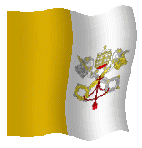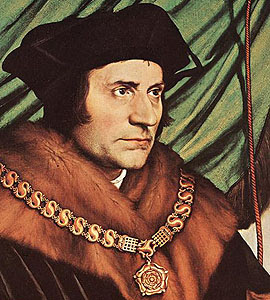Popery & Papists
During the Protestant Reformation, the term
Popery was used to describe items and ritual connected with Catholic usage
rejected by Protestants. The Papists were those people involved with Popery.
The words were essentially antagonistic in tone. Why did this antagonism arise?
When Henry VIII, in the 16th century, decided to
divorce his wife Katherine, he came to realize it could not be done at that
time without the consent of the Bishop of Rome, the Pope, the accepted leader
of the Christian Church in England. In order to surmount the problem Henry
decreed that the king of England, himself, should assume
leadership of the Christian Church in his dominions. So King Henry became head
of the Church of England, a title in various forms, persisting to this day.
In order to have this change accepted by all
citizens of the country, the important people of England would be obliged to
swear allegiance and agree to the decree that the King was Supreme Head of the
Church of England instead of the Pope. Most of these people went along with the
King’s decision. Since it was a criminal offence not to accept the new law,
many were afraid of the consequences if they refused to conform. Some may have
been convinced of the propriety of the law, that it was not necessary to have
the Pope as head of the Church, and that it would not radically affect the
Church of England. However, there were certainly many Christians who had
problems of conscience when they took the Oath of Supremacy, as it was termed.
Two prominent persons did refuse to take the
Oath of Supremacy. They were John Fisher, Bishop of Rochester, and Sir Thomas More,
who had been Lord Chancellor of England. Their example was
followed by a number of the Church’s clergy. The penalty for refusal was to be
condemned to death. Among those people who refused the oath was a group of
Carthusian monks, members of a strict monastic order. Their resistance to the
oath probably emphasized Henry’s decision, as Head of the Church, to dismantle
all the monastic institutions of England and Wales. Abbeys, priories and
convents of monks and nuns were important bastions of the Pope’s authority.
An important institution of the Christian Church
is ‘monasticism’. In the Catholic Church there are hundreds of abbeys, priories
and convents where monks, nuns and religious men and women live a regulated
life dedicated to following Christ, where prayer is all-important, and where
they work to support Christians in the practice of their faith. Five hundred
years ago, in the 16th century, there were around 800 monasteries in England and Wales. By the end of the 16th
century they had all ceased to exist. Their dissolution came about by order of
the head of state, King Henry V111 who had made himself head and leader of the
Christian Church in England and Wales. Any person who defied
this arrangement incurred the supreme penalty of the law.
One of the first to defy the king was a monk,
the superior of the Carthusian monastery at Melwood on the Isle of Axholme.
The king ordered him, along with several other
Carthusian monks, to be imprisoned in the Tower of London. After languishing for
some time in that place, he, with others, was taken out and barbarously
executed in public. The monk’s name was Augustine Webster. Soon after this
Henry ordered all monasteries to be dismantled. The order was carried out by
the king’s associate, Thomas Cromwell. A number of those monasteries were in North Lincolnshire; Bardney, Louth,
Barlings Thornton, Sixhills and Melwood to mention a few. After five hundred
years being used as quarries, very little is left of those large buildings. At Thornton there remains the
abbey’s magnificent gatehouse, and at Bardney, Barlings, Louth and Melwood some
masonry remains. Nothing remains of the former monastery, founded by St Gilbert
of Sempringham at Sixhills except some mounds in a field and four carved heads.
The heads have been fixed to the wall of a 17th century house.
This massive destruction of English heritage did
not take place without protest. In fact one of the prominent events of the 16th
century was the so-called Pilgrimage of Grace. This consisted of a march from
Louth to Lincoln to protest to the king
about the changes he had made. A massive number of people assembled on
Hambleton Hill, on the outskirts of Market Rasen, to formulate their
grievances. One of their grievances was the dissolution of the monasteries,
which had already been initiated by royal command.







No comments:
Post a Comment